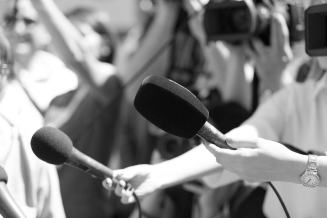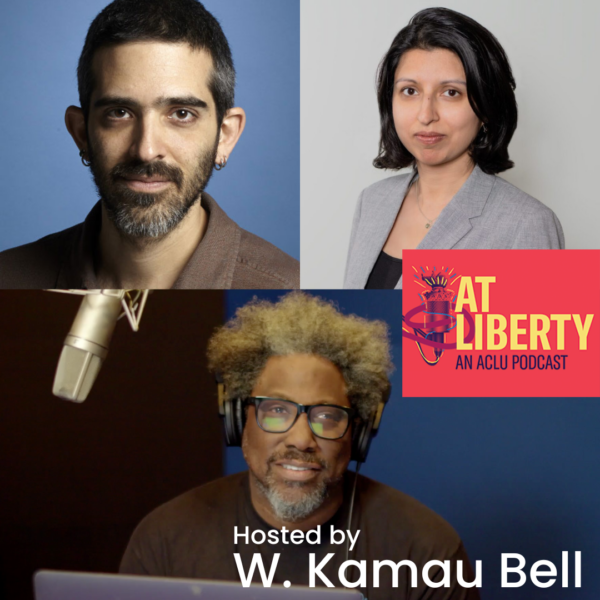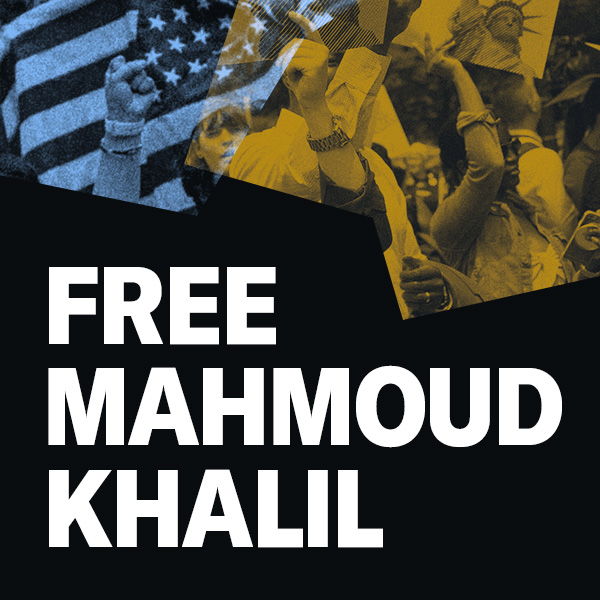
Last week I was given a tour of the “TSA Systems Integration Facility” (TSIF), the agency’s testing facility located at Reagan National Airport here in Washington, in some outlying buildings that used to house the airport’s post office facility. The tour included the opportunity to talk to some of the specialists who work there. We were shown technologies that are already familiar; there was nothing on some of the more ridiculous screening programs such as SPOT or FAST, nor anything futuristic. But I did pick up some items of possible interest to those curious about the functioning of our airport security technology—including passengers with disabilities or who face special scrutiny, such as Sikhs, who are nearly always forced to undergo extra screening because of the turbans that Sikh men wear. (The tour was arranged by TSA’s office of Civil Rights and Liberties.)
In the lobby of the testing facility the TSA has displayed two large pieces of metal from the World Trade Center, as well as a piece of stone rubble from the Pentagon 9/11 attack. A guide explained that they are on display because "you’re meant to understand the TSA's mission,” reminding us that the agency was founded in the wake of and in response to 9/11. For better or worse, that disaster clearly remains central to how the agency defines itself.
We were then taken to a large warehouse-like room filled with numerous examples of the kind of screening equipment that is familiar to everyone who flies: four or five full x-ray machine/conveyor belt setups for carry-on luggage, millimeter wave body scanners, and particle detectors for explosive detection. I spoke with the TSA official responsible for testing each technology. We also heard from the agency’s explosives expert, who showed us what explosives look like on an x-ray when hidden in a variety of objects.
The job of the testers is to work with the agency’s vendors to improve the technology, and also to independently test the vendors’ products and claims. Some of the tidbits I learned:
- The TSA engineer said the carry-on x-ray unit he was testing included an “automated detection algorithm,” which assists screeners by highlighting in an on-screen box any potentially problematic items such as those made of organic or other dense materials. (In this it is similar to the “Automated Target Recognition” (ATR) system in use with the body scanners, which allows those machines to display a stick figure instead of the full image of the passenger’s body underneath their clothing.)
- Another innovation in the x-ray units: the ability to send screen captures from the monitor to another computer so that a supervisor can examine an image without holding up the line. The agency scans an average of 1.7 million passengers per day, so throughput and efficiency are a huge priority. We were told that sometimes the agency brings in paid “extras” to go through these test checkpoints and see how the equipment fares with crowds.
- The x-ray machines used in the PreCheck checkpoints are different from those used in the non-PreCheck checkpoints. The TSA tester said he could not tell me what the differences were, other than that they were “optimized for different things,” or something to that effect.
- The Sikh representatives wanted to know why TSA agents always demand to search their turbans even when they are cleared by the body scanners (AKA Advanced Imaging Technology or “AIT” machines). Some of the Sikhs asked to go through the AITs, and we all saw that the machine gave them the “all clear” with no alarm or “anomaly” being indicated at their turbans. The basic answer was, as one of the testers explained, that “there are vulnerabilities on the AIT.” Clearly that means a problem with false negatives, with the result that TSA policy is to do a search of all turbans (and also controversially the hair of many African-Americans). When pressed by the Sikh representatives, the TSA officials basically told them the only solution to their problem was to join PreCheck, “so we know more about you, and trust you more."
- Explosive Trace Detectors or EDTs (the swabs used by screeners to look for the residue of explosives on travelers’ hands or belongings, which I’ve written about here) have a surprisingly high rate of false positives. The Sikhs who were there (who are subjected to this test frequently because of their turbans) asked what they could do to alleviate the frequent positive alarms some were reporting. Some explosives are made from nitrates, so the machines are tuned to alarm on that—but as the TSA’s expert put it, “nitrates are everywhere.” She suggested that the possible causes of regular false positives could include a wide variety of substances including certain cosmetics, lotions, hair care products, soaps, and laundry detergents. With an older model of the EDTs, she said, the agency realized that they were even alarming on the gloves that the TSA screeners wear on their hands, which were discovered to contain nitrates. The screener said that when the alarm rate rose this winter, it was also discovered that some commonly deployed varieties of road salt triggered the machine. Even if the swab is left out in the open too long, she said, it can generate a false alarm just from soaking up background nitrates from the air. Overall, the TSA expert said the alarm rate for the EDTs was “in the single digits.” (Given the large number of tests involved, even one percent would seem awfully high to me—high enough I would think to create a significant “boy who cried wolf” effect.)
- Also with regard to EDTs, the expert said a lot of the molecules they’re looking for are “very sticky.” She described one test in which someone stuck their hand on some explosives, and then shook the hand of another person, who in turn shook another person’s hand. These machines can alarm even on the 10th person down the line, she said. For passengers who carry insulin pumps, colostomy bags and similar medical devices, she said their procedure is to ask the passenger to touch the medical device with their hands, and then to swab the passenger’s hand.
Passengers with disabilities
Finally, the tour also included a discussion of the TSA’s treatment of people with disabilities. Hearing about all the situations the TSA must deal with is a reminder of the vast diversity of humanity. Those who pass through airline security include people of all shapes, sizes, bodies, cultures, gender identities, illnesses, disabilities, and mental states. It is a reminder of the messiness and complexity of the real world compared to the often simplistic or idealized visions of those who offer silver-bullet security solutions.
Passengers with disabilities and their families should be aware that the TSA has given certain volunteer TSA screeners special training to assist disabled passengers, and dubbed them “Passenger Support Specialists.” People with disabilities—including invisible disabilities such as autism—and their families are encouraged to call the “TSA Cares” hotline in advance of travel, and to know that they can ask to speak to a Passenger Support Specialist at the checkpoint. The TSA officials said that the agency is striving to (but does not yet) have a specialist at every open gate because the program “has been so successful.” The airline security process is bad enough; those with disabilities might take advantage of these programs to try to make it as tolerable as possible.
Stay informed
Sign up to be the first to hear about how to take action.
By completing this form, I agree to receive occasional emails per the terms of the ACLU's privacy statement.
By completing this form, I agree to receive occasional emails per the terms of the ACLU's privacy statement.


